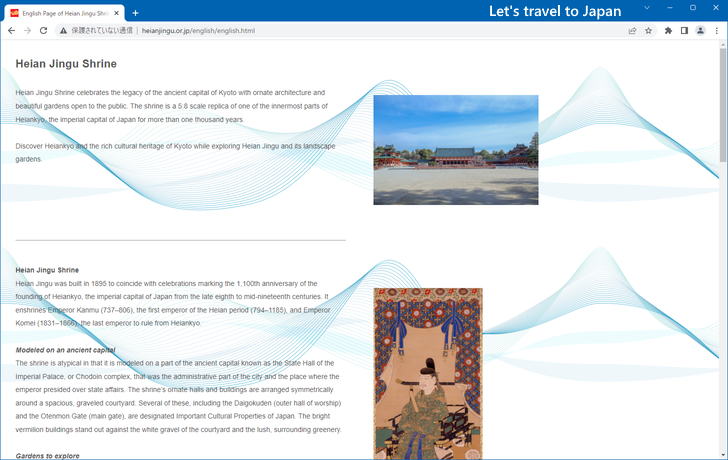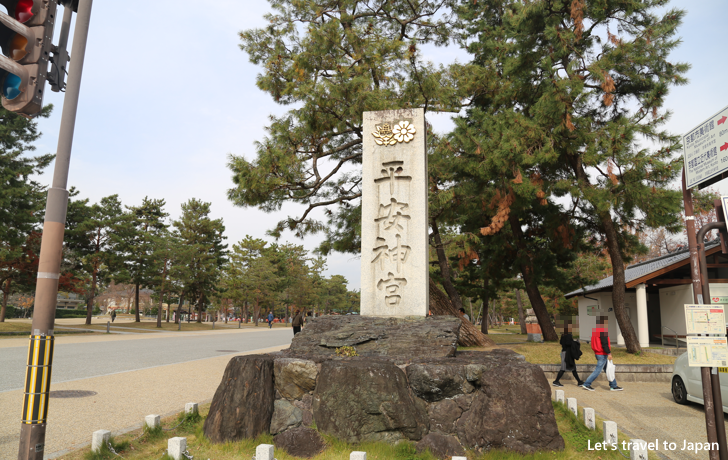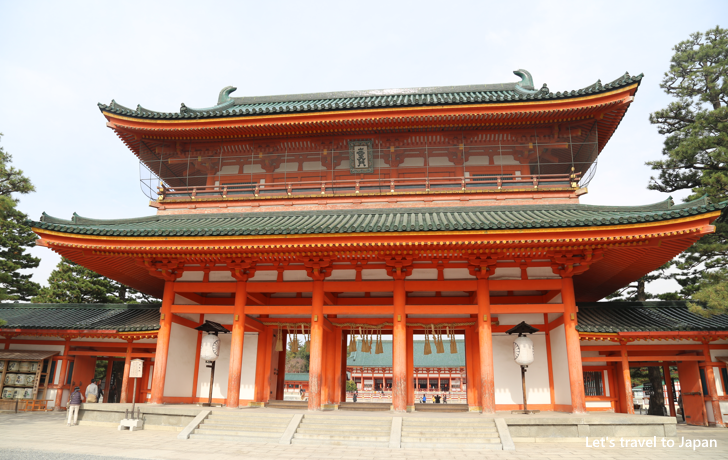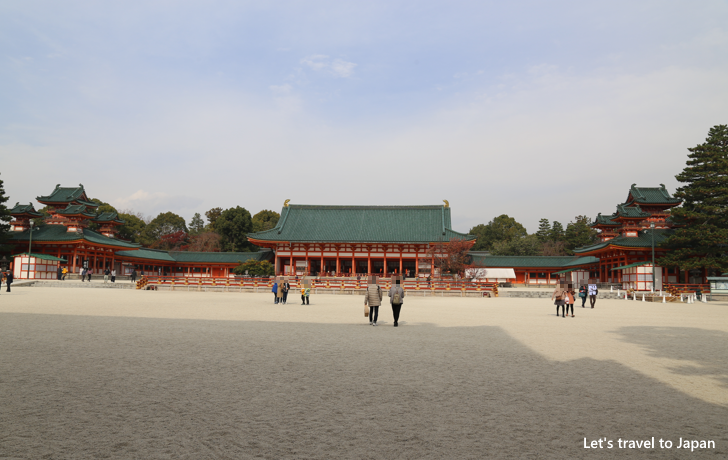Highlights and access methods of Heian Shrine (Kyoto Prefecture)
In this article, we will explain the attractions of Heian Shrine in Kyoto Prefecture and how to access it for those who are traveling to Japan from overseas.

(Last modified: )
(Prefecture : Kyoto , Category : Shrines)
Table of contents
About Heian Shrine
Heian Shrine, located in Kyoto, Japan, is a prominent Shinto shrine dedicated to the spirits of Emperor Kammu and Emperor Komei, the first and last emperors who reigned in Kyoto. Established in 1895, the shrine was built to commemorate the 1,100th anniversary of the founding of Kyoto. Its striking vermilion architecture and large torii gate create an impressive and picturesque sight.
The shrine grounds also feature an expansive Japanese garden called Heian Jingu Shinen, which covers roughly 33,000 square meters. The garden is divided into four sections, each representing a distinct style of traditional Japanese landscape design. Visitors can enjoy the beauty of the garden while strolling along the ponds and pathways, especially during cherry blossom and autumn foliage seasons when the scenery is at its most captivating.
Highlights of Heian Shrine
Heian Shrine, located in Kyoto, Japan, is a stunning and historically significant destination that offers tourists a glimpse into the elegance and cultural heritage of Japan's Heian Period (794-1185). Established in 1895 to commemorate the 1,100th anniversary of the founding of Kyoto, Heian Shrine is a partial replica of the Imperial Palace from the Heian Period, making it an ideal destination for visitors interested in Japanese history and architecture.
One of the main attractions of Heian Shrine is its impressive and brightly-colored main gate, the Otenmon, which welcomes visitors with its imposing presence and vivid vermilion color. The shrine's main hall, or Daigokuden, is another architectural marvel, featuring intricate woodwork and the same striking vermilion hue, creating a visually stunning contrast with the surrounding greenery.
In addition to its beautiful architecture, Heian Shrine is also renowned for its expansive and enchanting Japanese-style gardens. The shrine's grounds are divided into four separate garden areas, each designed to represent a distinct season: spring, summer, autumn, and winter. These gardens feature a variety of plant species, as well as ponds, bridges, and traditional tea houses, offering visitors a peaceful and picturesque environment to explore and appreciate the natural beauty of Japan.
As for the best season to visit Heian Shrine, the shrine and its gardens can be enjoyed year-round, as each season offers its own unique charm. However, spring (March to May) is particularly recommended, as the gardens come to life with cherry blossoms, azaleas, and wisteria, creating a truly breathtaking and quintessentially Japanese experience. Autumn (October to November) is another popular time to visit, as the fall foliage adds a vibrant display of color to the shrine's grounds.
In summary, Heian Shrine is a captivating and culturally rich destination that offers visitors an opportunity to explore the beauty and history of Japan's Heian Period through its stunning architecture and enchanting gardens. With its seasonal attractions and serene atmosphere, Heian Shrine provides a memorable and enriching experience for tourists seeking to immerse themselves in Japanese culture and history, particularly during the picturesque spring and autumn seasons.
Address and access method of Heian Shrine
Heian Shrine is located at 97 Okazaki Nishitennocho, Sakyo Ward, Kyoto, 606-8341, Japan. This popular tourist destination can be easily accessed using public transportation.
The nearest train station to Heian Shrine is Higashiyama Station, which is on the Kyoto Municipal Subway Tozai Line. From Higashiyama Station, it is approximately a 10 to 15-minute walk to the shrine. As you exit the station, head west along Sanjo Street and then turn north onto Jingu Michi Street. You will soon find the majestic torii gate marking the entrance to Heian Shrine.
Alternatively, you can take a bus to the shrine. Kyoto City Bus operates several routes that stop near Heian Shrine, such as numbers 5, 32, 46, 100, and 203. The closest bus stop is "Kyoto Kaikan Bijutsukan-mae," which is only a short walk from the shrine entrance.
In summary, Heian Shrine is located in the Sakyo Ward of Kyoto and can be easily reached by walking from Higashiyama Station on the Tozai Line or by taking one of the various Kyoto City Bus routes that stop nearby.
Attractions near Heian Shrine
Several notable attractions are located near Heian Shrine:
Fushimi Inari Shrine
One of Kyoto's most famous and iconic sites, Fushimi Inari Taisha is a Shinto shrine known for its thousands of vermilion torii gates lining the path up Mount Inari. It is just one stop away from Tofukuji Station on the JR Nara Line.
Sanjusangendo Temple
A Buddhist temple famous for its impressive hall housing 1,001 statues of Kannon, the goddess of mercy. The temple is a short bus ride or a 25-minute walk from Heian Shrine.
Kiyomizu-dera Temple
A UNESCO World Heritage Site, Kiyomizu-dera is a stunning Buddhist temple offering panoramic views of Kyoto from its famous wooden veranda. It is about a 30-minute walk or a short bus ride from Heian Shrine.
Kyoto National Museume
This museum, located near Sanjusangendo, showcases a vast collection of Japanese art and cultural artifacts, making it a must-visit for anyone interested in Japan's history and artistic heritage.
Gion District
Kyoto's famous geisha district, with its well-preserved traditional architecture, is just a few stops away from Tofukuji Station on the Keihan Main Line. A stroll through the charming streets of Gion offers the chance to experience Kyoto's rich cultural atmosphere.
These nearby attractions provide additional opportunities to immerse yourself in Kyoto's rich history and culture while exploring the vicinity of Heian Shrine.
Other information about Heian Shrine
Official site (English version) about Heian Shrine :
http://www.heianjingu.or.jp/english/english.html

Pictures about Heian Shrine :



-- --
Thank you for reading to the end.
( Written by Tatsuo Ikura )